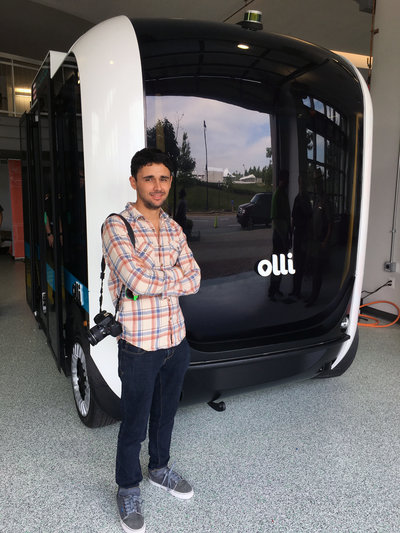“This is the world’s first autonomous on-demand shuttle. So basically you call it on an app and it picks you up just like Uber and it will talk to you,” says Justin Fishkin, Local Motors’ Chief Strategic Officer.

Local Motors, the manufacturer of the world’s first 3D printed vehicle, is actually local to us with a micro factory and base right here in Chandler, Arizona.
The newest addition to their line up is the uberly-cool (pun intended) Olli “Your friendly neighborhood mobile solution”. The self-driving Olli was the genius of industrial design student, Edgar Sarmiento, who at the age of 22, entered his concept into a Local Motors competition. With an app on your smart phone, the coolest micro bus ever, will pick you up and take you where you need to be … in style.
More on Edgar Sarmiento and Olli from NPR here.
More on Local Motors read more here!





